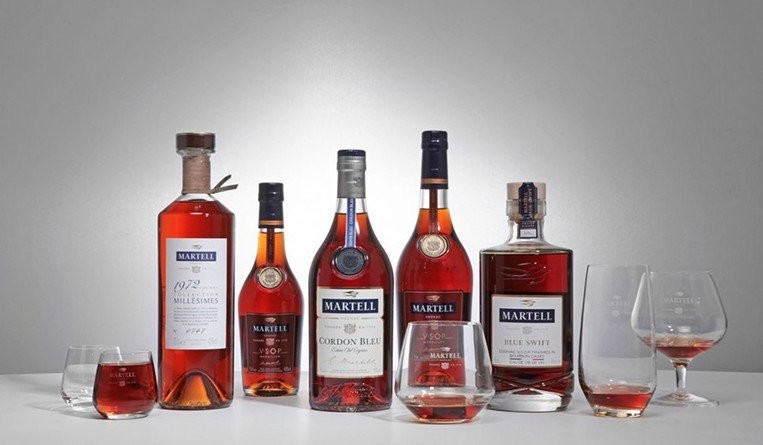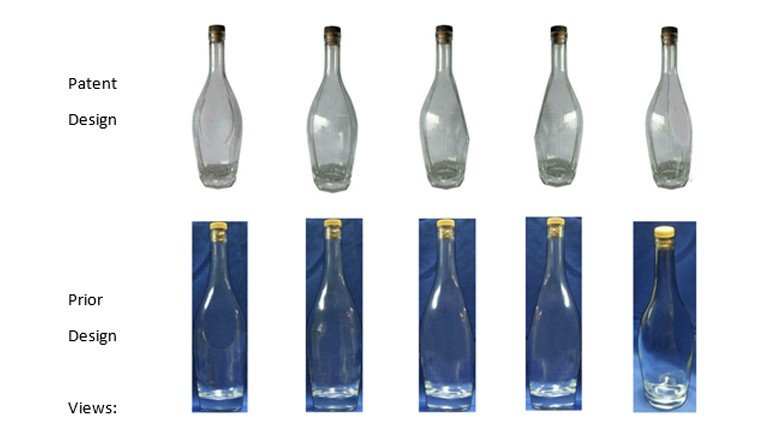The patent design and prior design share the following features: (1) both are hyaline glass bottle comprising bottle stopper, bottle mouth, bottle neck and bottle body; (2) The stopper, bottle mouth, bottle neck are of the same shape; (3) The bottle body has in its frontpart an oblique plane extending from the bottle neck all the way down to the middle and lower part of the bottle body, and the shapes of the oblique planes are almost identical.
The differences between the two designs mainly lies in: (1) The shapes of the bottle bodies are different, the bottle body of the patent design has vertical ridges, however, the bottle body of prior design is a smooth curved surface except for the oblique plane; (2) The bottom of the patent design is a regular octagon, but the bottom of the prior art is a circle.
The patent design and the prior design are both designs of bottle, mainly used to contain liquid for storage, transportation and sale. Other than meeting the basic function, there is still considerate design space left for the shape of bottle. In particular, the wine bottles, including those brandy bottles incorporating the patent design, which are actually used by the patentee, are of various shapes, styles and colors.
In light of the considerable design space of products, the court of first instance found that the aforesaid differences would be unlikely to significantly influence the overall visual appearance of the product, based on the reasons that (1) multiple vertical ridges on the bottle body can be clearly shown only in the top and bottom perspective views, but not from other perspectives, thus the difference does not produce a notable visual effect in comparison with the turning surface of prior design; (2) it is highly unlikely that an ordinary consumer would pay attention to the bottom of the bottle during use, and the bottom of the bottle does not produce a noticeable visual effect for an ordinary consumer.
The court therefore concluded that the design patent, which is not significantly different from the prior design, is unpatentable.
Factoring in design space in ascertaining the similarity of designs could help improve the objectivity of the conclusion. In fact, the SPC proposes, in the Provisions of the Supreme People's Court on Several Issues in the Trial of Administrative Cases involving Granting and Affirmation of Patent (Draft), to refer to the following parameters for the assessment of design space: (1) the function and use of product; (2) the design density of prior designs; (3) conventional designs; (4) the imperative provisions of any laws or administrative regulations; and (5) the national or industry technology standards. The draft, which had been released for one-month public comments starting on June 1, 2018, is still in the pipeline. It remains to be seen how these parameters are to be finalized in the final text.
Contributed by Zhao Hewen, senior patent counsel, Wanhuida Intellectual Property








